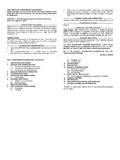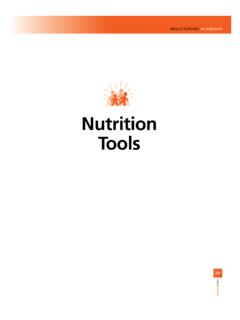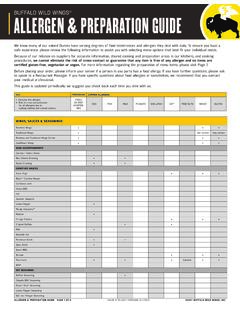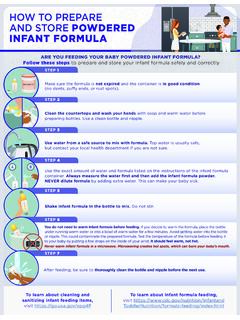Transcription of ANNEX I SUMMARY OF PRODUCT CHARACTERISTICS
1 ANNEX I. SUMMARY OF PRODUCT CHARACTERISTICS . 1. This medicinal PRODUCT is subject to additional monitoring. This will allow quick identification of new safety information. Healthcare professionals are asked to report any suspected adverse reactions. See section for how to report adverse reactions. 1. NAME OF THE MEDICINAL PRODUCT . Luxturna 5 x 1012 vector genomes/mL concentrate and solvent for solution for injection 2. QUALITATIVE AND QUANTITATIVE COMPOSITION. General description Voretigene neparvovec is a gene transfer vector that employs an adeno-associated viral vector serotype 2 (AAV2) capsid as a delivery vehicle for the human retinal pigment epithelium 65 kDa protein (hRPE65) cDNA to the retina. Voretigene neparvovec is derived from naturally occurring AAV using recombinant DNA techniques.
2 Qualitative and quantitative composition Each mL of concentrate contains 5 x 1012 vector genomes (vg). Each single-dose 2 mL vial of Luxturna contains extractable mL of concentrate which requires a 1:10 dilution prior to administration, see section After dilution each dose of Luxturna contains x 1011 vg in a deliverable volume of mL. For the full list of excipients, see section 3. PHARMACEUTICAL FORM. Concentrate and solvent for solution for injection. Following thaw from their frozen state, both the concentrate and the solvent are clear, colourless liquids with a pH of 4. CLINICAL PARTICULARS. Therapeutic indications Luxturna is indicated for the treatment of adult and paediatric patients with vision loss due to inherited retinal dystrophy caused by confirmed biallelic RPE65 mutations and who have sufficient viable retinal cells.
3 2. Posology and method of administration Treatment should be initiated and administered by a retinal surgeon experienced in performing macular surgery. Posology Patients will receive a single dose of x 1011 vg voretigene neparvovec in each eye. Each dose will be delivered into the subretinal space in a total volume of mL. The individual administration procedure to each eye is performed on separate days within a close interval, but no fewer than 6 days apart. Immunomodulatory regimen Prior to initiation of the immunomodulatory regimen and prior to administration of Luxturna, the patient must be checked for symptoms of active infectious disease of any nature, and in case of such infection the start of treatment must be postponed until after the patient has recovered.
4 Starting 3 days prior to the administration of Luxturna to the first eye, it is recommended that an immunomodulatory regimen is initiated following the schedule below (Table 1). Initiation of the immunomodulatory regimen for the second eye should follow the same schedule and supersede completion of the immunomodulatory regimen of the first eye. Table 1 Pre- and post-operative immunomodulatory regimen for each eye Prednisone (or equivalent). 3 days prior to Luxturna Pre-operative 1 mg/kg/day administration (maximum of 40 mg/day). 4 days Prednisone (or equivalent). (including the day of 1 mg/kg/day administration) (maximum of 40 mg/day). Prednisone (or equivalent). Post-operative Followed by 5 days mg/kg/day (maximum of 20 mg/day). Prednisone (or equivalent).
5 Followed by 5 days of one dose mg/kg every other day every other day (maximum of 20 mg/day). Special populations Elderly The safety and efficacy of voretigene neparvovec in patients 65 years old have not been established. However, no adjustment in dosage is necessary for elderly patients. Hepatic and renal impairment The safety and efficacy of voretigene neparvovec have not been established in patients with hepatic or renal impairment. No dose adjustment is required in these patients (see section ). Paediatric population The safety and efficacy of voretigene neparvovec in children aged up to 4 years have not been established. No data are available. No adjustment in dosage is necessary for paediatric patients. 3. Method of administration Subretinal use.
6 Luxturna is a sterile concentrate solution for subretinal injection that requires thawing and dilution prior to administration (see section ). This medicinal PRODUCT must not be administered by intravitreal injection. Luxturna is a single-use vial for a single administration in one eye only. The PRODUCT is administered as a subretinal injection after vitrectomy in each eye. It should not be administered in the immediate vicinity of the fovea to maintain foveal integrity (see section ). The administration of voretigene neparvovec should be carried out in the surgical suite under controlled aseptic conditions. Adequate anaesthesia should be given to the patient prior to the procedure. The pupil of the eye to be injected must be dilated and a broad-spectrum microbicide should be topically administered prior to the surgery according to standard medical practice.
7 Precaution to be taken before manipulating or administering the medicinal PRODUCT This medicinal PRODUCT contains genetically modified organisms. Personal protective equipment (to include laboratory coat, safety glasses and gloves) should be worn while preparing or administering voretigene neparvovec (see section ). For instructions for preparation, accidental exposure to and disposal of Luxturna, see section Administration Follow the steps below to administer voretigene neparvovec to patients: Diluted Luxturna should be inspected visually prior to administration. If particulates, cloudiness, or discoloration are visible, the medicinal PRODUCT must not be used. Connect the syringe containing the diluted PRODUCT to the tubing and microcannula.
8 The PRODUCT is slowly injected through the tubing and microcannula to eliminate any air bubbles in the system. The volume of PRODUCT available for injection is confirmed in the syringe, by aligning the plunger tip with the line that marks mL. After vitrectomy is completed, Luxturna is administered by subretinal injection using a subretinal injection cannula introduced via pars plana (Figure 1A). Under direct visualisation, the tip of the subretinal injection cannula is placed in contact with the retinal surface. The recommended site of injection should be located along the superior vascular arcade, at least 2 mm distal to the centre of the fovea (Figure 1B). A small amount of the PRODUCT is slowly injected until an initial subretinal bleb is observed, and then the remaining volume is slowly injected until the total mL is delivered.
9 4. Figure 1A Subretinal injection cannula introduced via pars plana Figure 1B Tip of the subretinal injection cannula placed within the recommended site of injection (surgeon's view). At the completion of the injection, the subretinal injection cannula is removed from the eye. After injection, any unused PRODUCT must be discarded. The back-up syringe may not be retained. Refer to local biosafety guidelines applicable for disposal of the PRODUCT . Fluid-air exchange is performed, carefully avoiding fluid drainage near the retinotomy created for the subretinal injection. Supine head positioning is initiated immediately in the post-operative period and upon discharge should be maintained by the patient for 24 hours. Contraindications Hypersensitivity to the active substance(s) or to any of the excipients listed in section Ocular or periocular infection.
10 Active intraocular inflammation. 5. Special warnings and precautions for use Proper aseptic techniques should always be used for the preparation and administration of Luxturna. The following adverse reactions have been observed with the administration procedure: Eye inflammation (including endophthalmitis), retinal tear and retinal detachment. Patients should be instructed to report any symptoms suggestive of endophthalmitis or retinal detachment without delay and should be managed appropriately. Retinal disorder (foveal thinning, loss of foveal function), macular hole, maculopathy (epiretinal membrane, macular pucker) and eye disorder (foveal dehiscence). Increase in intraocular pressure. Intraocular pressure should be monitored prior to and following administration of the medicinal PRODUCT and managed appropriately.
















